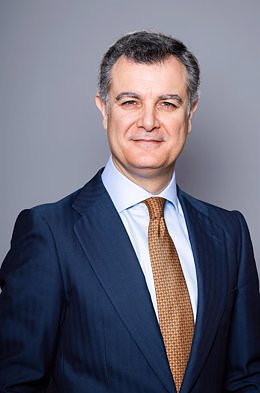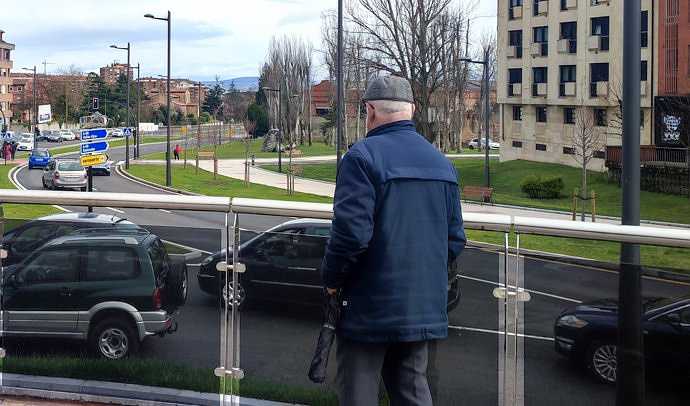This R D i instrument mobilizes close to 8 million in the Valencian Community, financing 30 research projects
VALENCIA, 29 Mar. (EUROPA PRESS) -
The Institute of Corpuscular Physics (IFIC) --a joint center of the Higher Council for Scientific Research (CSIC) and the University of Valencia (UV)-- has presented the Complementary R&D Plan for the Astrophysics and High Energy Physics program.
The organization coordinates this R D i instrument that mobilizes close to 8 million euros in the Valencian Community, financing 30 research projects. The exploration of "the biggest and the smallest of the universe is the objective", as well as the application of the technologies developed in the fight against cancer, are some of the fields of study.
The IFIC researcher Carlos Lacasta coordinates the initiative in the Community, whose presentation has brought together 60 experts in the field and has had the participation of the Minister of Innovation, Universities, Science and Digital Society, Josefina Bueno; the Autonomous Secretary for Universities and Research, Mª Auxiliadora Jordá; the General Director of Science and Research, Jorge Arnau Llinares; the Vice Chancellor for Research of the University of Valencia, Carlos Hermenegildo; the vice-rector for Research of the University of Alicante, Juan Mora, and the director of the IFIC, Nuria Rius, among other authorities. The event was moderated by IFIC researcher Carmen García.
The Complementary Plan for Astrophysics and High Energy Physics in the Valencian Community is part of the project 'Advanced technologies for the exploration of the universe and its components', in which seven autonomous communities participate: Andalusia, Aragon, the Balearic Islands, Cantabria, Catalonia, the Valencian Community and Madrid.
It is financed with close to 38 million euros, from the participating autonomies and from European funds provided by the Ministry of Science and Innovation through the Recovery, Transformation and Resilience Plan, which draws on the 'Next Generation' Recovery Fund, approved by the EU to deal with the coronavirus crisis.
The Astrophysics and High Energy Physics program is one of the 8 priority research areas that both the Government of Spain and the autonomous communities want to promote with the complementary plans for R D i financed with funds from the Recovery and Resilience Mechanism (MRR). The Valencian Community participates in 5 of the 8 areas of scientific-technical interest: Marine Sciences; Quantum communication; Agrifood; Astrophysics and high energy physics, and Advanced Materials.
The initiative of the Valencian Community is the second with the highest funding, close to 8 million euros, and is led by the IFIC. Among the institutions participating in the Complementary Plan for Astrophysics and High Energy Physics of the Valencian Community are the University of Valencia (UV), the University of Alicante (UA), the Miguel Hernández University (UMH), the Polytechnic University of Valencia ( UPV) and the Higher Council for Scientific Research (CSIC).
For Josefina Bueno, "these disciplines require very ambitious research projects undertaken by large national and international collaborations."
In this sense, "it is important to consolidate and keep our groups at the forefront of this effort, in addition to enhancing their visibility to optimize the scientific exploitation of research projects and allow them to involve the industrial fabric from the earliest stages of the projects in those who participate. Another of the major objectives is to promote coordination with other national groups to increase visibility and specific weight in international collaborations, in a way that makes it easier for them to undertake more ambitious goals," he adds.
The exploration of the laws of the universe, from its fundamental microscopic components to large-scale astrophysical objects and their interrelation, is behind the primary objectives of this proposal.
"The program has a markedly technological nature, and emphasizes the development of instruments that allow us to achieve these objectives and pave the way to the unknown," explains the coordinator, Carlos Lacasta. To this end, 30 research projects are financed.
The scientific-technological advances carried out in these projects have a practical application in other fields, such as medical physics (both for imaging diagnosis and the monitoring of new cancer therapies), or other fields, such as control and monitoring the decommissioning of nuclear power plants.

 Exploring Cardano: Inner Workings and Advantages of this Cryptocurrency
Exploring Cardano: Inner Workings and Advantages of this Cryptocurrency Seville.- Economy.- Innova.- STSA inaugurates its new painting and sealing hangar in San Pablo, for 18 million
Seville.- Economy.- Innova.- STSA inaugurates its new painting and sealing hangar in San Pablo, for 18 million Innova.- More than 300 volunteers join the Andalucía Compromiso Digital network in one month to facilitate access to ICT
Innova.- More than 300 volunteers join the Andalucía Compromiso Digital network in one month to facilitate access to ICT Innova.-AMP.- Ayesa acquires 51% of Sadiel, which will create new technological engineering products and expand markets
Innova.-AMP.- Ayesa acquires 51% of Sadiel, which will create new technological engineering products and expand markets The Prosecutor's Office requests that the AN investigate the detainee for terrorism for damaging an ax in a McDonalds in Badalona
The Prosecutor's Office requests that the AN investigate the detainee for terrorism for damaging an ax in a McDonalds in Badalona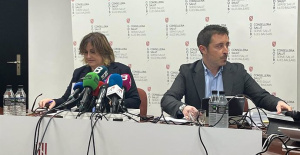 Balearic PSOE denounces the director of IbSalut for prevarication for renouncing the mask claim file
Balearic PSOE denounces the director of IbSalut for prevarication for renouncing the mask claim file Otxandiano reproaches that PSOE "has lent itself" to taking out ETA in the campaign, like the extreme right against Sánchez
Otxandiano reproaches that PSOE "has lent itself" to taking out ETA in the campaign, like the extreme right against Sánchez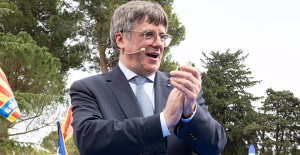 Puigdemont claims to have a "well grasp" of the State and asks to "be respected" to obtain more transfers
Puigdemont claims to have a "well grasp" of the State and asks to "be respected" to obtain more transfers How Blockchain in being used to shape the future
How Blockchain in being used to shape the future Not just BTC and ETH: Here Are Some More Interesting Coins Worth Focusing on
Not just BTC and ETH: Here Are Some More Interesting Coins Worth Focusing on Valencia displays its "innovative and technological potential" at the Emerge Americas event in Miami
Valencia displays its "innovative and technological potential" at the Emerge Americas event in Miami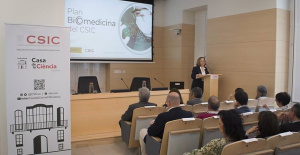 The CSIC incorporates the challenges of robotics, nanotechnology and AI in the new strategic plan for biomedicine
The CSIC incorporates the challenges of robotics, nanotechnology and AI in the new strategic plan for biomedicine Innovation allocates 9.1 million to train 74,000 people and guarantee digital inclusion
Innovation allocates 9.1 million to train 74,000 people and guarantee digital inclusion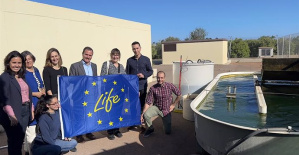 LIFE SPOT manages to develop new green treatments that eliminate groundwater contamination
LIFE SPOT manages to develop new green treatments that eliminate groundwater contamination A million people demonstrate in France against Macron's pension reform
A million people demonstrate in France against Macron's pension reform Russia launches several missiles against "critical infrastructure" in the city of Zaporizhia
Russia launches several missiles against "critical infrastructure" in the city of Zaporizhia A "procession" remembers the dead of the Calabria shipwreck as bodies continue to wash up on the shore
A "procession" remembers the dead of the Calabria shipwreck as bodies continue to wash up on the shore Prison sentences handed down for three prominent Hong Kong pro-democracy activists
Prison sentences handed down for three prominent Hong Kong pro-democracy activists ETH continues to leave trading platforms, Ethereum balance on exchanges lowest in 3 years
ETH continues to leave trading platforms, Ethereum balance on exchanges lowest in 3 years Investors invest $450 million in Consensys, Ethereum incubator now valued at $7 billion
Investors invest $450 million in Consensys, Ethereum incubator now valued at $7 billion Alchemy Integrates Ethereum L2 Product Starknet to Enhance Web3 Scalability at a Price 100x Lower Than L1 Fees
Alchemy Integrates Ethereum L2 Product Starknet to Enhance Web3 Scalability at a Price 100x Lower Than L1 Fees Mining Report: Bitcoin's Electricity Consumption Declines by 25% in Q1 2022
Mining Report: Bitcoin's Electricity Consumption Declines by 25% in Q1 2022 Oil-to-Bitcoin Mining Firm Crusoe Energy Systems Raised $505 Million
Oil-to-Bitcoin Mining Firm Crusoe Energy Systems Raised $505 Million Microbt reveals the latest Bitcoin mining rigs -- Machines produce up to 126 TH/s with custom 5nm chip design
Microbt reveals the latest Bitcoin mining rigs -- Machines produce up to 126 TH/s with custom 5nm chip design Bitcoin's Mining Difficulty Hits a Lifetime High, With More Than 90% of BTC Supply Issued
Bitcoin's Mining Difficulty Hits a Lifetime High, With More Than 90% of BTC Supply Issued The Biggest Movers are Near, EOS, and RUNE during Friday's Selloff
The Biggest Movers are Near, EOS, and RUNE during Friday's Selloff Global Markets Spooked by a Hawkish Fed and Covid, Stocks and Crypto Gain After Musk Buys Twitter
Global Markets Spooked by a Hawkish Fed and Covid, Stocks and Crypto Gain After Musk Buys Twitter Bitso to offset carbon emissions from the Trading Platform's ERC20, ETH, and BTC Transactions
Bitso to offset carbon emissions from the Trading Platform's ERC20, ETH, and BTC Transactions Draftkings Announces 2022 College Hoops NFT Selection for March Madness
Draftkings Announces 2022 College Hoops NFT Selection for March Madness



